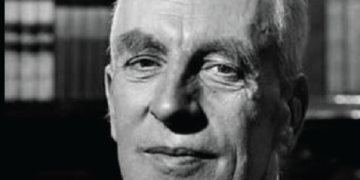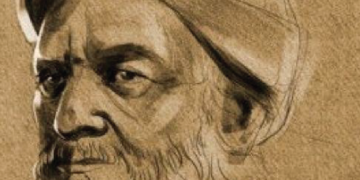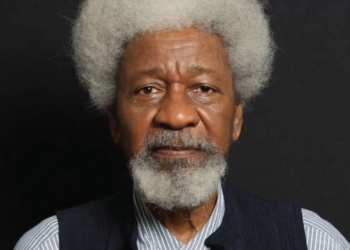Emilie du Chatelet
1) Her Biography:
During the Age of Enlightenment, Gabrielle Émilie Le Tonnelier de Breteuil, marquise du Châtelet was a French mathematician, physicist, and author. Her translations and analysis of Isaac Newton’s book Principia Mathematica is regarded as her greatest contribution. The translation, which was released after the author’s death in 1759, is still regarded as the accepted version in French. One of her lovers, Voltaire, said that du Châtelet was “a great man whose only fault was being a woman” in a letter to his friend King Frederick II of Prussia.
The only daughter of six, Émilie du Châtelet was born on December 17, 1706 in Paris. Du Châtelet also had an illegitimate half-sister named Michelle, who was conceived by her father and Anne Bellinzani, an astrophysicist and brilliant woman who was wed to a high-ranking official in Paris. Louis Nicolas le Tonnelier de Breteuil, a descendant of the lower aristocracy, was her father. Her father was the Principal Secretary and Introducer of Ambassadors to King Louis XIV at the time du Châtelet was born. On Thursdays, he hosted a salon at which eminent authors and researchers were invited.
There has been a lot of speculation about Du Châtelet’s education, but nothing is known for sure. Fontenelle, the French Académie des Sciences’ perpetual secretary, was one of their acquaintances. At the age of 10, Emilie’s father Louis-Nicolas invited Fontenelle to visit and discuss astronomy with her after noticing her early brilliance. Gabrielle-Anne de Froulay, Emilie’s mother, was raised in a convent, which at the time was the main type of educational setting open to French women and girls.
While some sources hold that her mother disapproved of her bright daughter’s intelligence or of her husband’s support of Émilie’s intellectual curiosity, other evidence suggests that her mother not only endorsed du Châtelet’s early education but actively encouraged Émilie to vigorously challenge received wisdom.
Such encouragement would have been viewed as extraordinary for parents of their time and rank in any scenario. Her father set up training in sports like riding and fencing for her when she was little, and when she became older, he brought tutors to the house for her. She was proficient in Latin, Italian, Greek, and German by the age of twelve as a result, and she later published French translations of plays and philosophy from Latin and Greek.
She completed coursework in science, literature, and mathematics. Gabrielle-Anne, her mother, was appalled by Émilie’s development and battled Louis-Nicolas at every turn, once seeking to have Émilie taken to a convent. In addition, Emilie enjoyed dancing, sang opera, played the harpsichord competently, and tried her hand at acting. She developed incredibly profitable gambling tactics as a teenager when she ran out of money for books.
She wed the Marquis Florent-Claude du Chastellet-Lomont on June 12, 1725. The Marquise du Chastellet title was bestowed upon her by her marriage. Their union was arranged, as were a large number of noble marriages. The husband’s father appointed him governor of Semur-en-Auxois in Burgundy as a wedding present; the newlyweds relocated there at the end of September 1725. Du Châtelet was nineteen years old and her spouse was thirty four years old.
Françoise Gabriel Pauline, Louis Marie Florent, and Victor-Esprit were the children of the Marquis Florent-Claude du Chastellet and Émilie du Châtelet. Early in the summer of 1734, perhaps on the final Sunday in August, Victor-Esprit passed away. Stanislas-Adélade du Châtelet, a descendant of Jean François de Saint-Lambert, was born to Emilie du Châtelet in 1749. Her birthday is September 4, 1749. The infant passed away on May 6, 1751, in Lunéville.
Du Châtelet restarted her mathematics studies in 1733 at the age of 26. She first received algebra and calculus instruction from Academy of Sciences member Moreau de Maupertuis. Despite not being particularly good at mathematics, Johann Bernoulli—who also taught Leonhard Euler—gave Maupertuis a sound education. But by 1735, du Châtelet had chosen to study mathematics under Alexis Clairaut, a brilliant mathematician best renowned for his equation and theorem.
Voltaire himself dates their encounter to 1729, when he returned from his exile in London; Du Châtelet speculates that they may have first met at one of her father’s salons when she was a young girl. But their friendship really took off in May 1733, when she returned to society following the birth of her third child. Voltaire became Du Châtelet’s lifelong friend after she asked him to reside in her country home in Cirey-sur-Blaise, Haute-Marne, northern France (under the eyes of her tolerant husband). She completed her math and physics coursework there and also wrote and published translations of scientific works. They lived together with a great deal of mutual respect and like, if one is to believe Voltaire’s letters to friends and their comments on one another’s writing.
Du Châtelet started an affair with poet Jean François de Saint-Lambert in May 1748, at which point she gave birth. She expressed her worries that she wouldn’t make it through her pregnancy in a letter to a friend. She gave birth to a daughter named Stanislas-Adélade on the evening of September 3, 1749, but she passed away from a pulmonary embolism a week later at the age of 42 at Lunéville.
18 months later, her daughter passed away. Her translation of Newton’s Principia Mathematica into French with her commentary, as well as her derivation of the idea of conservation of energy from its laws of physics, was considered to be her greatest accomplishment and was finished in 1749, the year before she passed away. The classic French translation of Principia Mathematica is still du Châtelet’s version, which was published ten years after the author’s passing.
2) Main Works:
Warmth and brightness:
Based on her investigation into the science of fire, du Châtelet wrote a paper in 1737 titled Dissertation sur la nature et la propagation du feu. In it, she made the speculative claim that other suns may have colours that are not present in the spectrum of sunlight on Earth.
Institutions de Physique:
Institutions de Physique, also known as “Lessons in Physics,” was written by her and published in 1740. It was intended as a review of contemporary philosophical and scientific theories for her 13-year-old son, but it also incorporated and attempted to reconcile complex ideas from the leading thinkers of the day. She joined the Academy of Sciences of the Institute of Bologna in 1746 as a result of the publication and the accompanying discussion.
Forces Vives:
Réponse de Madame la Marquise du Chastelet, a la lettre que M. de Mairan was a book written by du Châtelet that was published in 1741. A collection of arguments submitted to Dortous de Mairan, secretary of the Academy of Sciences, were published in relation to the proper mathematical formulation for forces vives. De Mairan withdrew from the debate after du Châtelet vigorously refuted his claims, point by point.
Principia:
Her translation of Newton’s Philosophiae Naturalis Principia Mathematica (often referred to as simply the Principia) into French, with her commentary, and her derivation of the idea of conservation of energy from its principles of mechanics, are considered to be her most notable accomplishments. This work was finished in 1749, the year of Du Châtelet’s death.
Discours sur le bonheu:
Discours sur le bonheur, a monograph by Du Châtelet, explores the nature of happiness with a focus on women.
3) Her Contribution to Science:
Criticizing Locke:
Du Châtelet critiques John Locke’s philosophy in her writing. She underlines the need of knowledge being proven via experience, saying that Locke’s notion of the potential of thinking matter is “abstruse.” Her comments on Bernard de Mandeville’s The Fable of the Bees serves as the basis for her critique of Locke.
She challenges us with her uncompromising argument in support of universal laws that govern human knowledge and behaviour and claims that they are innate. Du Châtelet argues that there must be a universal starting point or else all of our knowledge is relative. Du Châtelet disagrees with John Locke’s opposition to natural concepts and established principles in this sense. As the foundation for her methodical analyses in the Institutions, she also rejects Locke’s denial of the principle of contradiction. Instead, she reiterates her justifications for the necessity of antecedent and universal principles by saying that, two and two could then make 4 as well as 6 if preceding principles did not exist.
The relevance of Du Châtelet’s considerations is evidenced by Pierre Louis Moreau de Maupertuis and Julien Offray de La Mettrie’s references to her thoughts on motion, free will, thinking matter, numbers, and the method of metaphysics. She challenges Maupertuis’ idea that truth may be discovered by the application of mathematical laws.
Advocacy of Kinetic Energy:
Although the ideas of force and momentum had long since been established in the early 18th century, the notion that energy could be transferred across various systems was still in its infancy and would not be completely developed until the 19th century. It is now recognised that no mechanical momentum is lost due to friction and that a system’s entire mechanical momentum is conserved. Simply put, momentum cannot move between different forms and there is no such thing as potential momentum. There is also no “momentum friction.” This is accurate for all issues where the beginning state is symmetric in generalised coordinates, as Emmy Noether later demonstrated. Although mechanical energy, including kinetic and potential energy, can change forms, the overall amount remains constant over time.
The conservation of total energy, as opposed to momentum, was the Du Châtelet contribution. As a result, she was the first to define the idea of energy as such and, using data from her own empirical experiments, to quantify how it relates to mass and velocity. She replicated and popularised an experiment created by Willem’s Gravesande in which balls were dropped from various heights into a sheet of soft clay, inspired by the theories of Gottfried Leibniz. It was demonstrated that the kinetic energy of each ball is inversely related to the square of the velocity as measured by the amount of material displaced.It was discovered that the clay’s deformation was directly proportional to the height at which the balls were dropped, or the initial potential energy.
Prior scientists, with the exception of Leibniz, held the view that “energy” was equivalent to momentum and so proportionate to velocity. In accordance with this theory, the clay should have deformed in a manner proportionate to the square root of the height at which the balls were dropped. The right equation in classical physics for kinetic energy is E = 1/2(m)(v)^2, where m represents the object’s mass, v its speed, and E is its kinetic energy. Any type of energy must always have the same dimensions in order to be able to compare it to other forms such as potential or heat.
Only mechanical momentum was thought to be exactly conserved in Newton’s study. Only when energy conservation is taken into consideration are a wide variety of mechanical issues resolved. One of these is the interaction and scattering of two point masses. Using the findings of du Châtelet, Leonhard Euler and Joseph-Louis Lagrange created a more formal framework for mechanics.
Translation and Commentary on Newton’s Principia:
She derived the idea of energy conservation from the mechanics of Newton’s Philosophiae Naturalis Principia Mathematica and translated it into French along with her ideas. Today, Du Châtelet’s translation of the Principia, which was released ten years after her passing, continues to be the accepted French rendering of the text. The scientific revolution in France was completed and accepted in Europe thanks to her translation of the Principia and commentary on it.
4) Her Influence:
Du Châtelet made a significant scientific contribution by providing a timely, accurate, and insightful French translation of Newton’s historical work, together with her own unique idea of energy conservation. She is the subject of three plays: Legacy of Light by Karen Zacaras; Émilie: La Marquise Du Châtelet Defends Her Life Tonight by Lauren Gunderson; and Urania: the Life of Émilie du Châtelet by Jyl Bonaguro. A main-belt minor planet and a crater on Venus have both been named in her honour. The final hours of her life are depicted in Kaija Saariaho’s opera Émilie.
Du Châtelet is frequently shown holding dividers or a page of geometric calculations in pictures that use mathematical symbolism. A probably fictitious account of Du Châtelet’s youth was first published in a French pamphlet about famous women from the early nineteenth century called Femmes célèbres. According to this tale, a servant created her a doll by dressing up some wooden dividers to seem like a doll. Du Châtelet, however, undressed the dividers and realised they were meant to form a circle.
The Emilie Du Châtelet Prize for excellence in Physics has been given out by the French Society of Physics (la Société Française de Physique) every year since 2016.
The Du Châtelet Prize in Philosophy of Physics is also awarded annually by Duke University to a graduate student or junior scholar for “previously unpublished work in philosophy of physics.” Emilie Du Châtelet will be remembered in a Google












